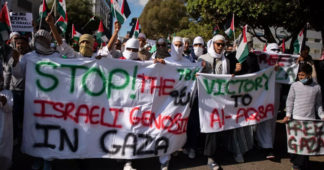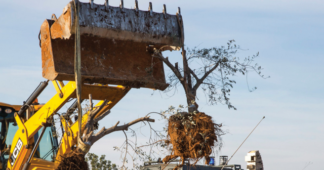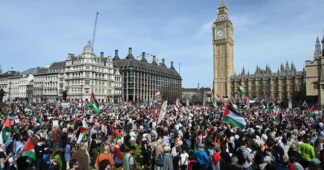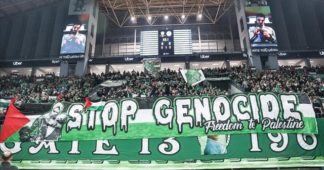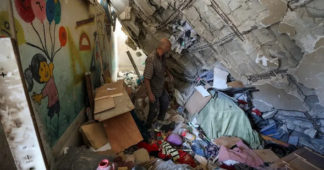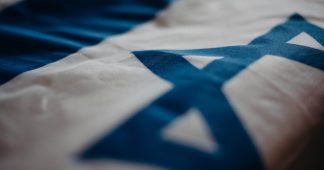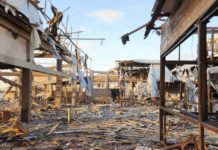Ana Maria Monjardino*, The Electronic Intifada
Jul 10, 2025
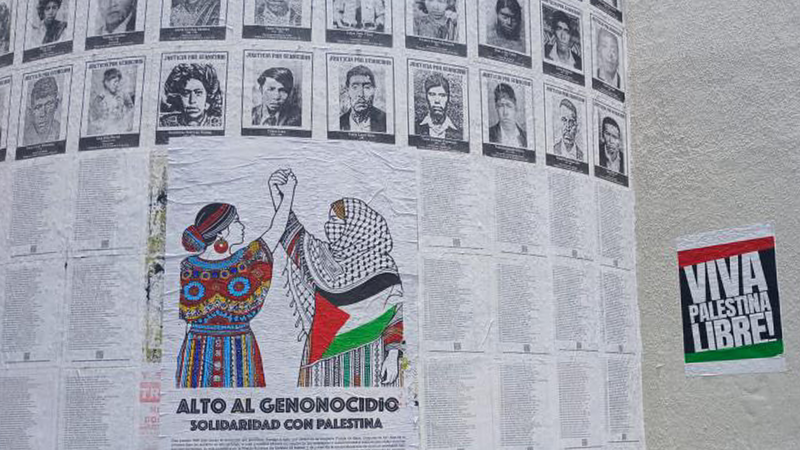
Distorting the historical narrative is a mechanism of control.
On few other issues, however, can it have been applied with a heavier hand than on Israel’s genocide in Gaza where by early July, more than 57,000 people had been killed.
By starting the conversation on 7 October 2023, for instance – thus ignoring the 77 years of occupation and ethnic cleansing that precede it – a colonial project is re-imagined as a nation under threat.
And engaging with the entire history takes us beyond Palestine. From countries in Africa to Latin America, Israel has helped to destroy Indigenous communities, exporting weapons and tactics “conveniently tested on occupied Palestinians, then marketed as ‘battle-tested’,” writes Antony Loewenstein in his 2023 book The Palestine Laboratory.
In Guatemala, the site of some of Israel’s most abhorrent war crimes outside of Palestine, the reality of Israeli warmongering is well documented. Israel’s instrumentality in the decades-long civil war and state-sponsored genocide of the Indigenous Maya provides critical context for the genocide of Palestinians today.
Current relations between Israel and Guatemala are bound to this bloody history and fueled by the relationship between Zionism and an Evangelicalism informed by two biblical interpretations.
The first is a manipulated version of the biblical Book of Genesis according to which God will bless those who bless Israel and curse those who do not. Genesis actually states that the blessing applies to all descendants of Abraham (or Ibrahim, as Muslims call that prophet).
The second, and more outlandish, is an apocalyptic omen derived from the Book of Revelations postulating that Jewish settlement in and control over Palestine is a precursor to Christ’s return.
The consequence of this Christian Zionist phenomenon – described by Palestinian Reverend Munther Isaac as “an imperial theology” that “serves the interests of the empires of today at the expense of the weak and defenseless” – constitutes a conflation between faith and geopolitics that breeds solidarity with Israel, as was seen in Bolivia in recent years.
Israeli support
An estimated 200,000 Maya and, to a lesser extent, Ladino (also known as Mestizo) people of mixed Indigenous and European descent, were killed or disappeared during the 36-year Guatemalan civil war that was fought between 1960 and 1996.
However, it was between 1981 and 1983 – especially under the leadership of Efraín Ríos Montt, a Pentecostal Evangelical, and at the height of Israel’s military involvement – that “more than half the massacres and scorched earth operations occurred,” according to the UN-sponsored Report of the Commission for Historical Clarification (CEH).
Established in 1994 to investigate the history of human rights violations and acts of violence throughout the armed conflict, the CEH found that “agents of the state of Guatemala, within the framework of counterinsurgency operations carried out between 1981 and 1983, committed acts of genocide against groups of Mayan people which lived in the four regions analyzed.”
And Israel’s fingerprints were all over Ríos Montt’s atrocities.
In the wake of his coup d’état on 23 March 1982, Ríos Montt told an ABC reporter that it had succeeded “because many of our soldiers were trained by the Israelis.”
In 1983, his chief of staff General Héctor López Fuentes also confirmed that, “Israel is our principal supplier of arms and the number one friend of Guatemala in the world.”
During the exhumation of bodies at Las Dos Erres, the site of a 1982 massacre where at least 350 people were killed, forensic anthropologists discovered that “ballistic fragments found in some of the skulls corresponded to weapons and cartridge cases of the Galil rifle,” an Israeli-made automatic rifle.
Israel’s genocide in Gaza is bound to this bellicose history.
Viva Palestina
“The tactics, the way of operating, have been the same,” said Roxana Gramajo, a Ladina activist and speaker at Guatemala’s pro-Palestine marches.
But “the world is changing,” she told The Electronic Intifada, so “we must continue to apply pressure, boycotts and public denunciations.” After all, “it is always Israel that carries the flag.”
Catherin Chomalí Kokaly, a Palestinian Chilean activist and businessperson who has lived in Guatemala since 1992, agreed.
“The connection between the genocide in Gaza and that of the Indigenous populations in Guatemala is a common arms supplier: the Zionist state of Israel, which profits from wars and death.”
At a recent protest in commemoration of the 1948 Nakba, this connection was also duly noted by Francisco Sanchez, from the group Colectivo Hijos Guatemala (Collective Children of Guatemala), in an interview with Hispan TV.

Colectivo Hijos was established in 1999, a few years after the signing of the 1996 peace agreement.
“We organized ourselves because we were children and relatives, and people who were also linked to the revolutionary struggle,” Sanchez, who identifies as Mestizo, told The Electronic Intifada. “We organized ourselves to demand clarification of the whereabouts of our relatives.”
Regarding Colectivo Hijos’ support for Palestinian liberation he explained: “Israel was fully involved here [in Guatemala] in the implementation of the genocide.” In that sense, he continued, “we have a historical link that unites us with the Palestinian people.”
“We hope, in some way, even now, in the current context, to continue working and strengthening this process [of connection] to continue those true liberation processes for the people.”
Beyond protesting genocide, he said, “we are now demanding the return of the Guatemalan embassy to Tel Aviv.”
Acts of solidarity with Palestinians are essential, as Chomalí Kokaly noted: “I don’t know what is stronger: the boundless ambition of absurd and unhinged leaders, or the silence of those who can still change the history of the world.”
Apocalyptic omen
Beyond arms and ammunition, the Palestinianization of Guatemala’s Indigenous population – a term that was used openly to describe the repression of “the nation’s rebellious Mayan” – extended to a process of agricultural apartheid.
One example was the “model village” program: a counterinsurgency strategy that forced displaced villagers into concentrated settlements to isolate and control them.
According to journalist Victor Perera, following a visit to the highlands of Quiché in 1983, the “model villages” were “based in part on the defensive kibbutzim along Israel’s border.”
Within them, Beatriz Manz, an American anthropologist, told Plaza Publica, a Guatemalan investigative journalism publication, “the Evangelical Church was converting many people.”
Villages, “that had a deep Catholic syncretism, or that were part of liberation theology, were devastated. Each place changed radically, and the few people who remained became members of the Evangelical Church,” she said in a 2013 interview.
The concurrent persecution of Catholic priests and laymen due to their support for Indigenous communities and their liberation theology was most prevalent under Ríos Montt, the first Pentecostal Evangelical leader of Guatemala.
His presidency, for a vocal minority of Guatemalan Evangelicals, “signaled the beginning of the fulfilment of the biblical prophecy that would precipitate the Second Coming of Christ,” wrote Virginia Garrard-Burnett in Terror in the Land of the Holy Spirit: Guatemala Under General Efraín Ríos Montt.
“Aided and abetted by conservative foreign evangelicals (associated with the Reagan administration),” she wrote, Ríos Montt “was conducting a one-sided ‘holy war’ against Catholic peasants, with evangelical Protestantism serving as the anti-Marxist counterinsurgency’s secret weapon of mass destruction.”
Growing up at this time, as a Ladina in a Catholic family, Roxana Gramajo recalled: “The year I was born, Efraín Ríos Montt took office as president, creating an atmosphere for the neo-Pentecostal Church to gain even further ground. He martyred many Catholic priests who promoted justice and social struggle.”
And, she told The Electronic Intifada, this persecution did not end with the Ríos Montt dictatorship or even the end of war in 1996.
“Despite the peace agreement signed in December 1996,” she said, “the state apparatus continued to operate.”
This was clear with the 1998 assassination of Monsignor Juan Gerardi.
His death came “only two days after he had presided over presentation of the ODHAG [the human rights office of the Guatemala archdiocese] report on its Recuperation of the Historical Memory Project (REMHI), based on the study of more than 55,000 human rights violations suffered in Guatemala over the 36-year period of civil conflict in the country,” noted Amnesty International at the time.
Theological foreign policy
“Evangelical churches now represent from 25 to 40 percent of the population” in Guatemala, Cecilia Baeza, a professor of international relations, told The New Arab in 2019.
“These churches play a central role in disseminating Christian Zionism and are increasingly active in the political realm,” Baeza said.
In policy terms, this was most obvious with then president and Evangelical Jimmy Morales’ decision to move the Guatemalan embassy from Tel Aviv to Jerusalem in 2018, following in the footsteps of the United States, who did it “for the Evangelicals,” according to Donald Trump in his first stint as US president.
The Guatemalan move constituted a “victory” for the then recently established Guatemalan Congressional Israel Allies Caucus.
According to Josh Reinstein, president of the Israel Allies Foundation, a non-partisan lobbying group with representatives in 56 countries, and who was also director of the Knesset Christian Allies Caucus, Guatemala moved its embassy to Jerusalem, “not because of a strong Jewish lobby but because Bible-believing Christians wanted their government to do so.”
Following the embassy move, another Christian Zionist organisation known as the Evangelical Alliance of Guatemala congratulated the government for its decisions and “encouraged churches and individuals who are friends of Israel to fly Israeli flags in public places ‘as a sign of support and solidarity in the current situation,’” according to Prensa Libre, a Guatemalan daily newspaper.
“In Guatemala,” Jamal Hadweh, head of the country’s Palestinian Association, told The Electronic Intifada, “the Evangelical Alliance has been key in supporting Israel.”
In 2022, Israel’s Prime Minister Benjamin Netanyahu extended his gratitude to the Evangelical community, standing alongside Jimmy Morales.
Addressing Juan Cruz Cellammare, the president of the Latin Evangelical Alliance — a regional organization that includes the Evangelical Alliance of Guatemala — Netanyahu said Israel was building support in Latin America on the foundations laid by the Evangelical church there.
“I was delighted to hear from President Jimmy Morales about the great support Israel enjoys in Latin America from our evangelical friends […] I look forward to expanding and deeply developing relations between Israel and the evangelical community throughout Latin America.”
To this day, and since the embassy move in 2018, Israel-Guatemala Friendship Day has been celebrated annually on 14 May. This year was no different, genocide or no gencoide.
Humanitarian propaganda
Zionist attempts to shore up Guatemalan support are also seen in Israeli humanitarian projects in the very communities it once helped to destroy.
One key actor in this is Mashav, Israel’s international aid agency, operating under the Israeli foreign ministry. Despite Israel’s continued use of starvation as genocidal tactic in Gaza, in Guatemala, Mashav works with local authorities to conduct projects in the field of agriculture, water management and sustainability.
This eerie attempt to whitewash its genocidal crimes, both past and present, is widespread.
In the wake of the Volcán de Fuego eruption in 2018, the Israeli foreign ministry announced that it would send $10,000 in aid to support the victims of the disaster.
Aid workers trained by Israel’s Zaka, the group much discredited for fabricating claims of beheaded babies and sexual violence on 7 October 2023, also attended the scene and even established a unit there.
This is reminiscent of the aftermath of the 1976 earthquake, in the midst of the civil war, when the Evangelical church in the US began sending aid and missionaries to support displaced communities, prompting, at least in part, the rise of Pentecostal Evangelicalism in Guatemala.
Such humanitarian propaganda, to paraphrase Munther Isaac, serves to manipulate “the weak and defenseless” in the interest of “the empire of today.”
The deliberate conflation of Christianity with Zionism, faith with politics, breeds solidarity with Israel — no matter the cost.
In the face of this manipulation, recognizing what links both genocides is a critical task. From Guatemala to Gaza, justice is a collective pursuit.
*Ana Maria Monjardino is an independent journalist from London.
We remind our readers that publication of articles on our site does not mean that we agree with what is written. Our policy is to publish anything which we consider of interest, so as to assist our readers in forming their opinions. Sometimes we even publish articles with which we totally disagree, since we believe it is important for our readers to be informed on as wide a spectrum of views as possible.
